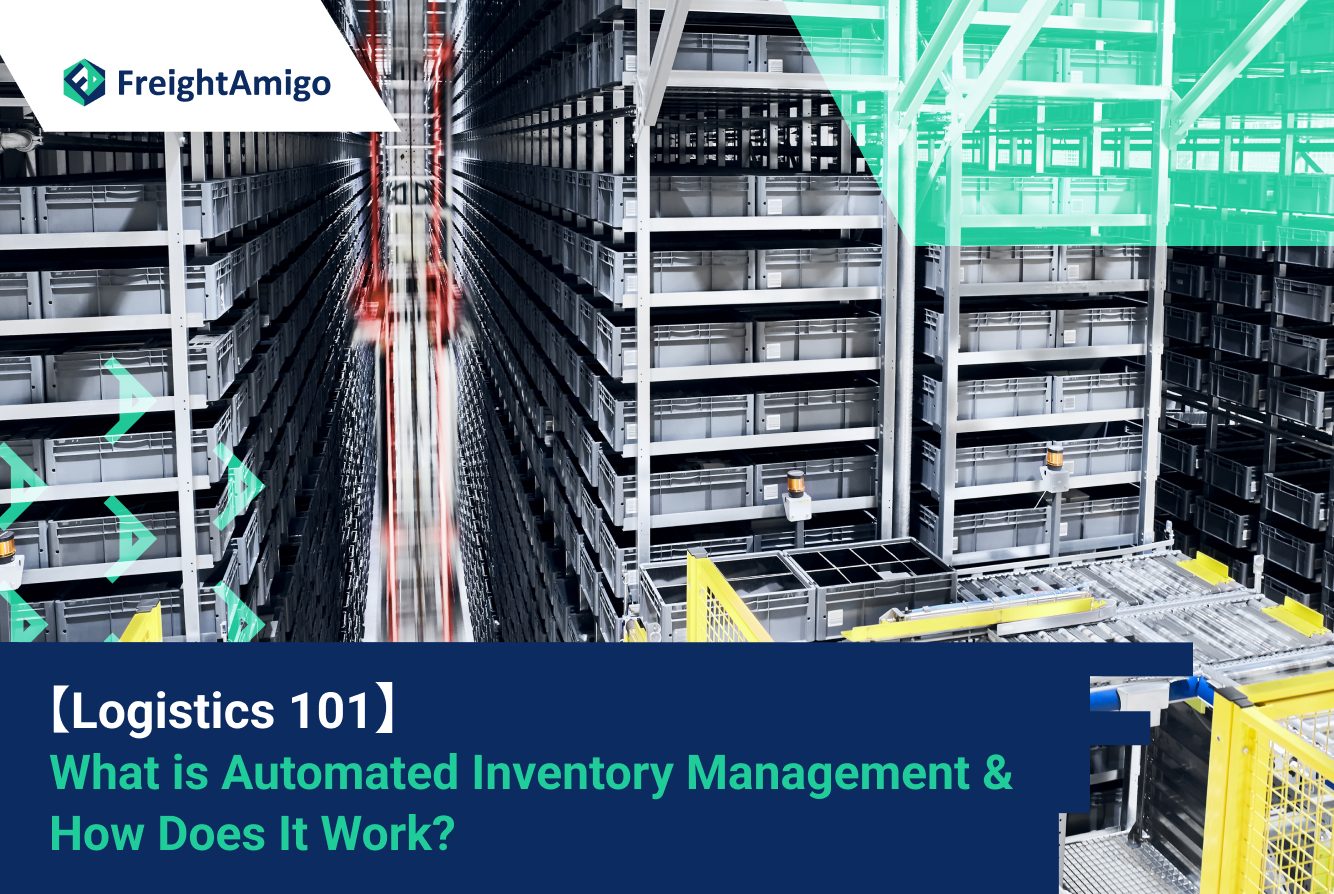Inventory management is a critical aspect of running a successful business, especially when dealing with multiple sales channels and a physical store. Trying to manually juggle all the variables can lead to errors and consume valuable time. However, there is a solution that allows you to save time and improve the accuracy of your inventory management processes: automated inventory management systems.
Author Name:Tiffany Lee – Marketing Analyst at FreightAmigo
Want to compare the best Express, Air Freight, Sea Freight, Rail Freight & Trucking rates so as to have better control on cost?
What is Automated Inventory Management?
Automated inventory management systems enable retailers and wholesalers to manage their inventory in real-time, simplifying workflows and saving time. These systems utilize pre-built conditions to automate various processes such as dropshipping, backorders, partial fulfillment, order invoicing, customer tagging, inventory counts, and more. They also offer features like automated inventory control, purchase order generation, and reporting, allowing you to manage your entire backend from one intuitive interface.
How Does an Automated Inventory Management System Work?
Automated inventory management is the key to effectively tracking and organizing stock, supplies, and sales for modern retailers, whether they operate online or in physical stores. These systems provide real-time inventory management, allowing you to make timely business-critical decisions.
For example, when a product reaches its reorder point, the inventory management software automatically notifies you or even initiates the reordering process. To achieve real-time accuracy, inventory automation should be integrated with other retail management tools like order management or point-of-sale software. This integration ensures that you have a comprehensive view of all sales across different channels.
Why Invest in an Automated Inventory Management System?
Effective inventory management is crucial for retailers, making the investment in the right automated system worthwhile. Let us explore the benefits of automated inventory management:
1. Save Tons of Time
With an automated system, you can say goodbye to manually updating inventory on spreadsheets. The system automatically updates stock counts across all channels, ensuring accuracy and freeing up your time for more important tasks. Every time a product is sold, returned, or received, the automation engine registers the action and updates the system without the need for manual intervention.
2. Gain Real-Time Visibility
You can track available inventory in your warehouse(s), identify stock that needs to be picked for current orders, and monitor stock on order from suppliers. This level of accuracy ensures you never disappoint customers with stock-outs or unfulfilled orders.
3. Prevent Miscalculations of Stock Levels
Stock miscalculations can be a nightmare for retailers. However, automated inventory management solutions make this task much easier. By analyzing customer data, inventory analytics can forecast ideal inventory levels and trigger stock replenishment when necessary.
4. Enjoy Increased Accuracy
Manual data entry is prone to human error. By automating inventory management processes, you eliminate the need for manual data entry. The software itself handles data entry, including adding, deleting, forecasting, and replenishing stock in real-time.
How to Choose an Automated Inventory Management System
Choosing the right automated inventory management system is crucial for your business processes. Consider the following factors when assessing different software options:
Automatic Reordering
Automatic reordering is a critical backend operation for multichannel retailers. Look for a retail operations tool that offers stock notifications, custom par levels, and vendor relations to ensure your products are always available for customers to buy.
Automated Stock Transfer
If your inventory is spread across multiple locations or warehouses, automated stock transfers become essential. The inventory management system should offer automated transfer controls to optimize flexibility and ensure distributors can find stock in the right location to fulfill demand.
Inventory Alerts and Notifications
With so many channels and activities, you need a tool that keeps you updated every step of the way. Look for an inventory management tool that provides comprehensive inventory alerts, including low inventory levels, overstocks, and supplier/shipping delays.
E-Commerce Integration
For multichannel retailers, seamless e-commerce integration is vital. Your chosen inventory management tool should facilitate integrations with other e-commerce management tools like POS or CRM systems. Unifying inventory management processes with the right data is crucial for effective inventory management.
Automated Order Management
Automating order dispatch processes allows you to troubleshoot warehouse inefficiencies at the source. Look for features like barcode scanning, label printing, and delivery channel optimization to streamline order management and enhance efficiency.
Streamlined Store Reporting
Reporting capabilities are essential for making better business decisions. Your automated inventory management tool should generate real-time data and offer real-time inventory tracking. This comprehensive reporting enables you to track and analyze various aspects of your supply chain management process.
Trends to Watch in Inventory Management Automation
Inventory management automation is an evolving field. Here are some of the top trends to watch:
1. Data Analytics
Data analytics will play an increasingly significant role in inventory management. Gathering and analyzing data drive insights and sales. Descriptive, diagnostic, predictive, and prescriptive data provide valuable information about business performance and guide decision-making.
2. Automated Machinery
Automation is transforming inventory and warehousing management on the ground. Automated Guided Vehicles (AGVs) and other machinery are becoming more common, making processes more efficient and precise.
3. 5G Technology
The advent of 5G technology will revolutionize warehouse management. Its faster wireless capabilities enable remote warehouses to gather and utilize data better than ever before. Retailers can track shipments and inventory in real-time, enhancing operational control.
Conclusion
By harnessing the power of automation, businesses of all sizes can enhance their supply chain management, improve customer satisfaction, and gain a competitive edge. Integrating FreightAmigo with automated inventory management systems further streamlines supply chain and logistics operations, offering several advantages. Real-time inventory tracking, automated replenishment and order processing, optimized logistics planning, and data analysis empower businesses to optimize their processes, make informed decisions, and stay ahead in today’s competitive market. Embrace the power of automation and take your inventory management to the next level.
There are different options for cargo transportation. If you want to choose the most convenient and suitable solution, it is best to have the full support of logistics experts! If you are planning to ship goods overseas, please go to the FreightAmigo page for inquiries.
===
Read More:
【Logistics 101】What is Delivery Schedule and How it Works?
Green Procurement: A Sustainable Approach to Purchasing
===
If you have any inquiries on logistics/supply chain, feel free to contact FreightAmigo now:
Chat with us online OR
Phone : +852 28121686
WhatsApp: +852 27467829



